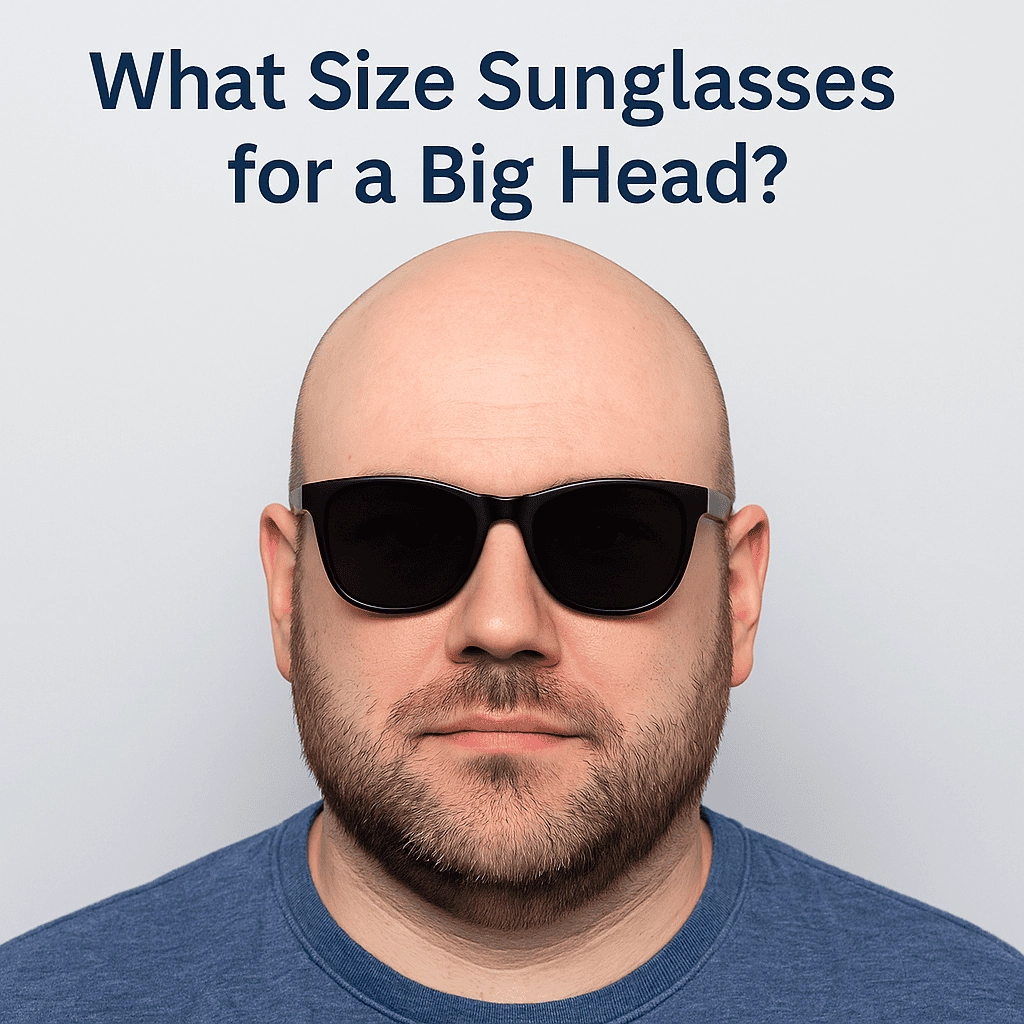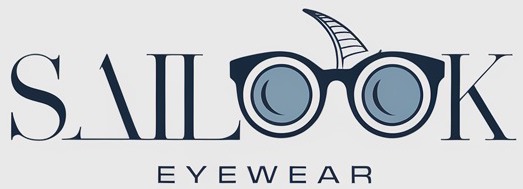If you’ve ever struggled to find sunglasses that don’t pinch your temples or sit awkwardly on your face, you’re not alone. Let’s face it—finding sunglasses for a big head can be frustrating. But don’t worry, there’s a solution that goes beyond just picking “XL” from a size filter. This guide breaks down everything you need to know about getting the right fit, from measurements and frame materials to style and comfort. Backed by real sizing charts, brand recommendations, and professional insights, this article is crafted to help eyewear professionals, retailers, and designers make better buying or manufacturing decisions for clients with larger head sizes.

1. What counts as a “big head” when buying sunglasses?
Here’s the deal—head size isn’t just about your hat size. It’s about frame width, face shape, and temple spread. Most sunglasses are designed to fit medium-size heads by default, which means people with wider faces often end up with frames that feel tight or look too small.
A “big head” generally refers to anyone with a head width above 140mm. But it doesn’t stop there. The actual feeling of tightness can depend on the bridge width, temple length, and how the frame material handles pressure. Ready for the good part? Most brands now categorize sunglasses into Small, Medium, Large, and Extra Large sizes—but each brand’s definition differs slightly.
So, when a client says they have a large head, you’ll want to ask: What’s their temple width? What’s their head circumference? Do they often feel pinching at the ears or pressure at the bridge?
| Size Label | Typical Head Width (mm) | Notes |
|---|---|---|
| Medium | 128–138 | Standard sizing for most adults |
| Large | 139–145 | Slightly wider, fits most men |
| XL | 146+ | Ideal for broad or round faces |
2. How do you measure your head for sunglasses?
Measuring your head sounds simple, right? But here’s the kicker—it’s easy to get it wrong if you don’t know where to start. Most eyewear buyers and designers rely on three key dimensions: temple-to-temple width, bridge width, and temple length.
First, use a soft measuring tape or a ruler and stand in front of a mirror. Measure the width across your face from temple to temple. This gives you the frame front size. Then, measure your temple length from your ear to the back of your head (where the temple arms rest). Finally, check the bridge area—this is the space between the lenses over your nose.
But wait—there’s more. If your head is asymmetric, slightly rounded, or has sharp jawlines, those measurements can shift how a frame sits. Always take notes and use the data when comparing against size charts.
| Measurement Type | How to Measure | Ideal Range for Big Heads |
|---|---|---|
| Temple Width | Side to side above cheekbones | 140–155mm |
| Bridge Width | Across the top of the nose | 18–22mm |
| Temple Length | Ear to end of head | 145–150mm |
3. What are the best sunglasses frame widths for big heads?
Let’s get one thing straight—not all wide frames are truly “big head” friendly. This is where it gets interesting. Frame width is often the single most important spec when choosing sunglasses for a broad head. Yet many shoppers only look at lens width or style.
For wider heads, frames in the 145mm–155mm range are typically ideal. Some brands call these “oversized,” others say “wide fit” or “XL.” But don’t rely on labels. Always check the full measurements: lens width + bridge width + hinge to hinge frame length.
It’s also worth knowing how material affects width. Acetate frames might feel snug even if the dimensions look right because they’re more rigid. Flexible TR90 or memory metal can offer extra breathing room.
| Frame Width Category | Measurement Range (mm) | Recommended Use |
|---|---|---|
| Standard | 128–138 | Regular-sized heads |
| Wide Fit | 139–145 | Slightly broader faces |
| Extra-Wide | 146–155 | Ideal for big heads |
4. Which frame styles look best on large heads?
Some frame styles work better than others on larger faces. But don’t worry—you don’t have to stick with boring choices. Here’s what you need to know. Rectangular frames tend to balance out wider heads. Square frames can enhance symmetry, while aviators offer room due to their tall, teardrop shape.
Avoid small, round frames unless you’re going for a very specific vintage aesthetic. They can exaggerate width or make the face look disproportionate.
If your brand offers customization, consider adding thicker temples and wider bridges to classic styles. That subtle tweak can completely change the comfort and look for clients with wider facial features.
| Frame Style | Why It Works | Watch Out For |
|---|---|---|
| Rectangle | Adds structure to round/wide faces | Can feel narrow if lens is too short |
| Aviator | Tall lens height fits broad faces | Avoid small sizes under 58mm |
| Square | Enhances jawlines, offers bold look | Too thick can feel bulky |
5. What materials are most comfortable for big heads?
Here’s a tip you don’t want to skip—material matters just as much as size. Acetate frames look stylish but can feel rigid. TR90 is a flexible thermoplastic that adapts well to broader faces. Titanium is light and strong but can be pricey.
What’s the real story? For big heads, comfort depends on how well the material handles flex without creating pressure at the temples or ears. Spring hinges help relieve that pressure, especially during long wear. Adjustable nose pads also improve balance.
Don’t underestimate finish either. Matte surfaces are less sticky and reduce skin irritation, which is common behind the ears for larger heads wearing tight frames.
| Material | Comfort Level | Flexibility | Best Use Case |
|---|---|---|---|
| TR90 | High | Very good | Sports, long wear |
| Acetate | Medium | Low | Fashion-driven designs |
| Titanium | Very high | Good | Lightweight, premium models |
6. Where can you find sunglasses made for big heads?
There’s good news—plenty of brands have recognized the gap in the market. But here’s the thing: not all brands are transparent about their sizing. So how do you find the right pair?
Start with brands known for inclusive sizing like Oakley XL, Sunski, or Maui Jim. Some offer specific “wide” or “extended fit” collections. Boutique brands may also provide oversized models, but it’s essential to check measurements, not just marketing labels.
Online retailers often list frame dimensions. Use filters or search terms like “wide fit sunglasses,” “XL frame sunglasses,” or “oversized eyewear” to find relevant models.
| Brand | Specialty | Notable Series |
|---|---|---|
| Oakley | Sport + XL Fit | Gascan XL, Holbrook XL |
| Sunski | Eco + Wide | Headland, Treeline |
| Ray-Ban | Classic Icons | RB4165, RB2132 Wide Fit |
7. How do you spot sunglasses that will feel too tight?
Let’s be honest—tight sunglasses are a nightmare. You know the feeling: sore ears, red marks, constant adjusting. But how do you identify the issue before it’s too late?
Check the fit around the temples. If the arms curve inward significantly or sit high behind your ears, it’s a sign the frame is too narrow. Also, pay attention to the nose bridge—if the glasses keep sliding or pinching, you’re likely dealing with sizing issues.
Some visual red flags include: the front of the frame flaring outward, excessive lens curvature, or temples spreading wide when worn. If the client says, “they look okay but feel tight,” believe them—it’s not always visible from the outside.
Here’s another trick. Hold the frame at arm’s length and compare the width against the widest part of the face. If the temples point outward rather than hugging in a straight line, sizing’s off.
| Symptom | Possible Cause | Quick Fix |
|---|---|---|
| Red marks on temples | Frame too tight | Look for wider temple arms or flexible materials |
| Slippage on nose | Poor bridge fit | Use adjustable nose pads or choose lower bridge width |
| Ear pain | Short temple length | Increase temple length to 145–150mm |
8. Can adjustable sunglasses solve fit problems?
Now this might surprise you—adjustable features can make a huge difference. Here’s where flexibility saves the day. Adjustable nose pads, flexible hinges, and memory metal temples help distribute pressure more evenly across the face.
For bigger heads, spring-loaded temples are a top feature. They expand slightly when needed without permanently bending the frame. Nose pads that pivot or slide allow fine-tuning of lens height and angle—especially helpful for clients with low or wide nose bridges.
But adjustable doesn’t mean universal. Some oversized frames still need wider front widths to match. Adjustable parts are a great complement—not a replacement—for correct sizing.
| Feature | Function | Benefit for Big Heads |
|---|---|---|
| Spring Hinges | Flex at temples | Prevent tight grip behind ears |
| Nose Pads | Adjustable fit | Improve comfort + balance |
| Memory Metal | Retains shape | Handles stretch without breaking |
9. What lens sizes and shapes work best on big heads?
This is where lens shape steps in as both a style and fit factor. Ready for the good part? Large heads benefit from wider and taller lenses, but only when the frame shape matches the face.
Rectangular lenses in 55–58mm width tend to sit well without overwhelming. Aviators typically start at 58mm and go up to 62mm, offering a bold yet balanced look. Oversized square lenses create a modern feel—just avoid ultra-thick rims if weight’s a concern.
For fashion-forward clients, larger round lenses (over 52mm diameter) can work when paired with thinner temples and a strong bridge.
| Lens Shape | Recommended Width | Style Impact |
|---|---|---|
| Rectangle | 55–58mm | Sharp + structured |
| Aviator | 58–62mm | Bold, retro appeal |
| Square | 56–60mm | Balanced + bold |
10. How do you match sunglasses to your face shape?
Let’s break this down—face shape plays a role, but don’t overthink it. What’s the real story? Matching the frame to the head size comes first, then adjusting for face contours.
Wide heads with rounder faces do well with angular frames—think rectangles and straight-line aviators. If the face is long or oval, wider lenses with soft curves bring harmony. Square jaws benefit from round or oval lenses to soften the overall look.
Use the jawline, cheekbone width, and forehead ratio to guide your shape choice—but always prioritize head width and comfort first.
| Face Shape | Best Frame Shape | What to Avoid |
|---|---|---|
| Round | Rectangle, Aviator | Small round lenses |
| Square | Oval, Round | Harsh lines, tiny frames |
| Oval | Most shapes work | Frames too narrow for head |
11. Are polarized or prescription lenses available for larger frames?
You might be wondering—can big frames still handle special lenses? The answer is yes. Larger frames are actually better suited for prescription lenses because they offer more surface area and flexibility in optical alignment.
Polarized lenses are available in oversized formats too. They’re especially helpful for outdoor sports, driving, and water-based activities where glare is a concern.
Prescription users should confirm lens thickness and curvature compatibility, as high-index lenses might require design adjustments. Most labs can handle oversized lens orders with the right frame specs.
| Lens Type | Availability | Best Use |
|---|---|---|
| Polarized | Widely available | Outdoor & sun protection |
| Rx Lenses | Available with lab check | Vision correction |
| Transition | Some wide frames support | Indoor-outdoor users |
12. Can people with big heads wear wraparound sunglasses?
Now here’s a common question—are wraparounds off-limits for big heads? Not necessarily. The secret lies in frame curvature and temple flexibility.
Wraparound styles offer excellent eye coverage and wind protection, making them ideal for athletes. However, many models are too tight because of their strong curve angle. Look for wraparounds labeled as “wide fit” or “performance fit.”
Some brands offer flexible temples that open wider or use rubberized arms that grip without pressure. It’s a tricky category, but not impossible.
| Feature | Watch For | Tip |
|---|---|---|
| Curve Angle | Too tight? Skip it | Try semi-wrap style |
| Temple Flex | Must accommodate width | TR90 is a winner |
| Grip Pads | Can cause pressure | Choose breathable rubber |
13. How can fashion brands better serve customers with big heads?
Let’s talk industry. This is where brands often fall short. Most sunglasses collections cater to average head sizes, leaving out a sizeable portion of the market (pun intended).
Fashion-focused brands should consider adding extended sizing SKUs with wider bridges and longer temples. A simple size filter labeled “wide fit” can make all the difference during shopping.
Designing a separate line for wide heads doesn’t require reinventing your collection. Just take your best-sellers and scale them proportionally. It’s a high-return move for relatively low design investment.
| Brand Strategy | Why It Works | Example |
|---|---|---|
| Extended Sizes | Meets unmet need | Add 3mm to bridge + 5mm to temples |
| Labeling “Wide Fit” | Improves search & filter | Helps customers self-identify |
| Fit Testing | Reduce returns | Collect head data for patterns |
14. What are common mistakes when buying sunglasses for big heads?
You’d be surprised—most fit issues come from avoidable mistakes. Let’s go through a few. First, many buyers focus only on style. They skip the sizing chart and trust their gut, which often leads to discomfort.
Second, they assume lens width = frame width. In reality, overall frame width depends on bridge size, temple angle, and lens height too.
Lastly, people forget to check how the frame bends. Even wide frames can squeeze if the arms curve too aggressively.
| Mistake | What Happens | Solution |
|---|---|---|
| Ignoring size chart | Frame too tight | Always verify mm specs |
| Choosing by style only | Poor balance | Match frame to face + head |
| Not testing temple fit | Pain at ears | Try spring hinges or custom bend |
15. What should you prioritize when choosing sunglasses for a big head?
Let’s wrap up the essentials. Here’s the checklist that really matters. Prioritize the frame width first—this determines your baseline comfort. Next, look for adjustable or flexible features like spring hinges or memory metal.
Comfort should always come before branding or hype. A well-fitting $50 pair will outperform a $300 fashion label if it’s the right fit. For clients or users with recurring fit issues, recommend brands that consistently deliver extended sizing.
Build a personal list of go-to models, and don’t hesitate to keep samples in the showroom or office. When you find the right frame fit, everything else becomes easier.
| Priority | Why It Matters | Buyer Tip |
|---|---|---|
| Frame Width | Sets overall fit | Stick to 145mm+ for big heads |
| Temple Flex | Avoids pressure points | Always test at ear + hinge |
| Nose Bridge | Impacts balance | Go adjustable or wide-fit nose pads |
Conclusion
Finding the right sunglasses for a big head doesn’t have to be a headache. From choosing the correct frame width to identifying flexible materials and comfort-first features, there’s a smart way to shop and sell. The best fit is the one that feels effortless. Use this guide as your reference to build better product offerings or make more confident purchasing decisions.
FAQ
Q1: What is considered a big head for sunglasses?
Heads measuring over 140mm wide generally fall into the “big head” category for eyewear.
Q2: How do you know if sunglasses fit a big head correctly?
If sunglasses don’t pinch your temples, sit evenly on your ears, and align with your eyes, they’re likely a good fit.
Q3: Are there brands that make sunglasses specifically for big heads?
Yes, several brands like Oakley XL, Sunski, and certain Ray-Ban models offer larger frame sizes.
Q4: Can I get prescription lenses in oversized frames?
Absolutely—many optical shops can install prescription lenses into oversized or wide-fit sunglasses.
Q5: What’s the safest way to shop online for big-head sunglasses?
Check product measurements, read reviews, and look for free return policies to ensure fit without risk.

